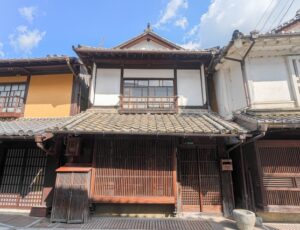
2024 Land Price Trends in Japan: Nationwide Growth in Real Estate Market
Japan’s real estate market is experiencing steady growth, with land prices increasing for the third consecutive year, driven by demand in regional and tourist areas like Okinawa and Hokkaido. While the Japanese economy is slowly recovering, this upward trend in land prices is evident across the country, including the three major metropolitan areas, as well as in various regional markets. If you’re considering buying property in Japan, now is a great time to explore opportunities. Visit our website to browse the latest listings of investment properties and residential properties in Japan.
The latest “Prefectural Land Price Survey” has revealed that land prices in Japan have risen by 1.4% on average, marking the third consecutive year of growth. The trend is not limited to major metropolitan areas but includes regional cities and popular tourist destinations. Okinawa, Hokkaido, and Kumamoto are among the top areas experiencing significant increases, driven by factors such as demand from new residents and the construction of semiconductor factories. Additionally, the revitalization of resorts like Nagano’s Hakuba is boosting local land investments.
In Okinawa, the residential demand for areas such as Onna Village and Miyakojima is soaring due to an influx of people relocating there. Meanwhile, Hokkaido’s Chitose City benefits from new semiconductor plant developments, leading to housing demand for workers. In commercial areas, Kumamoto’s land prices have risen sharply, partly due to Taiwan’s TSMC building semiconductor factories nearby.
Even outside major urban centers, the appeal of resorts and tourism has driven up land prices. Hakuba, a well-known ski resort, saw a 30.2% rise in land value due to strategic moves to attract summer visitors with new activities, including large scenic swings and mountain biking tracks. These efforts have transformed Hakuba into a year-round tourist destination, leading to increased hotel investments and further boosting the local economy.
Top 10 Residential and Commercial areas with the highest growth in land prices are below:
TOP 10 Residential Areas:
1. Onna Village (Maeda), Okinawa – 29.0%
2. Miyakojima (Irarabu), Okinawa – 26.1%
3. Chitose (Sakae cho), Hokkaido – 23.5%
4. Miyakojima (Hirara), Okinawa – 23.4%
5. Chitose (Shinonome), Hokkaido – 23.4%
6. Miyakojima (Ueno), Okinawa – 20.2%
7. Miyakojima (Shimoji), Okinawa – 20.2%
8. Furano, Hokkaido – 20.1%
9. Miyakojima (Gusukube), Okinawa – 19.5%
10. Miyakojima (Gusukube), Okinawa – 19.3%
TOP 10 Commercial Areas:
1. Ōzu (Murozono), Kumamoto – 33.3%
2. Ōzu (Shiro), Kumamoto – 33.3%
3. Kikuyō (Tsukure), Kumamoto – 32.5%
4. Hakuba, Nagano – 30.2%
5. Ōzu (Inumizu), Kumamoto – 28.0%
6. Takayama, Gifu – 27.1%
7. Kikuyō (Hiraoka), Kumamoto – 25.8%
8. Asakusa, Tokyo – 25.0%
9. Chitose (Hokuei), Hokkaido – 24.5%
10. Chitose (Suehiro), Hokkaido – 24.2%
Urban land prices in Tokyo also continue to grow, with foreign investors and high-income households driving demand in central areas. Commercial districts in Asakusa and Tsukiji have experienced steep rises as a result of increasing tourism and new hotel developments catering to international visitors.
While most regions saw land prices rise, the Noto Peninsula, affected by earthquakes, experienced notable declines, particularly in Ishikawa and Toyama prefectures. In Wajima City, land values dropped by up to 17.1%, reflecting the ongoing challenges of recovery in disaster-hit areas.
This national trend highlights a broad-based recovery in Japan’s real estate sector, influenced by a mix of domestic demand, foreign investments, and strategic development efforts in tourism and technology sectors.
*Information as of September 2024.
Reference:
Prefectural Land Price Survey 2024



